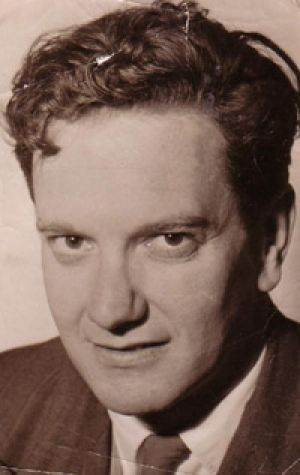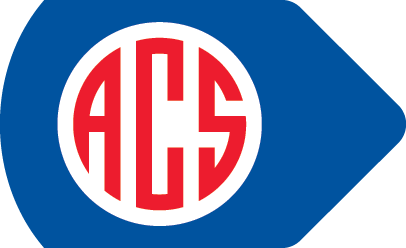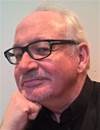Preamble
The Australian Computer Society (ACS) was formed 50 years ago, when the various state computer societies joined forces.
To mark the occasion, the ACS has initiated a heritage project to honour the many individuals who have contributed to the growth of the ICT profession in Australia.
At the heart of the project is a history of computing in Australia. It is not just a history of the ACS, but the history of a profession.
Australia has the longest computing history of any country, excepting the US and the UK, and CSIRAC in the Museum of Victoria is the oldest computer still in existence.
Chapter 22: The early years of the Australian Computer Society
The Australian Computer Society (ASC) came into existence on 1 January 1966, formed from the amalgamation of existing state societies (see Chapter 10). From the start, it was very much a federated body, with the individual state and territory branches retaining considerable autonomy.
That was the only way the formerly independent organisation could be brought together – there had been much debate over the relative merits of a loose confederation of state branches versus a strong national body.
At first, the coordination between the branches was achieved by the establishment, under the ACS Constitution, of the ACS Council, with the Council and the branches specifically empowered to handle their own financial and other affairs. The inaugural meeting of the Council was held in Canberra on 2 February 1966, with John Bennett as President, Trevor Pearcey Vice-President, and Bob Rutledge Honorary Secretary.
The ACS Council was given powers relating to member registration (to ensure this was consistent across all branches), international matters, affiliation with other bodies, the establishment of new branches, and the suspension of any branch that failed to pay its fees to the Council (which has never happened).
The first Council was an interim body to establish the Society. In May 1966, a new Council took office after branch elections in March. It held its first meeting in Canberra on 16 May. The branch delegates were:
- Trevor Pearcey and Don Overheu (Canberra)
- John Bennett and Bob Rutledge (NSW)
- L. Olsen and Ken Pope (for Merv Fagg) (Qld)
- Peter Benyon and Ted Norman (SA)
- Peter Murton (Vic).

John Bennett
The three inaugural office bearers were all re-elected. Branches were subsequently formed in Western Australia (October 1966 – admitted January 1967), Tasmania (March 1975) and the Northern Territory (January 1983).
Over time, the role of the Council evolved into a strong national secretariat. It remained in existence until 2008, when it was replaced by a national Management Committee.
The aims of the ACS were spelt out in a May 1968 resolution of the council:
- On membership qualifications and standards: to raise the membership to the standard where corporate membership is accepted as evidence of professional competence.
- On public relations: to have the Society accepted as an authority and in a position to advise on computer matters as they relate to the public interest.
- On the activities of the Society and its branches: to promote the Society as the proper forum for the discussion of computer matters; to ensure that no opportunity for attracting new members or publicising the activities of the Society in a dignified and professional way should be overlooked in an attempt to encourage all persons qualified to be members to join the Society; if it appears appropriate, to engage in or promote activities directed to non-members if these activities are in accordance with the Society’s objectives.
- On international activities: to work so that the Society should represent the Australian computing profession internationally in computer and information processing matters.
The formal incorporation of the ACS was not achieved until 3 October 1967, in the ACT. In that year the objectives were changed slightly so that the benefits to members became a consequence of pursuing its scientific and educational activities, rather than the primary objective.
A key activity of the ACS from its inception has been to develop, maintain and promote professional standards. It has been a constant theme throughout the Society’s existence. It has attempted to standardise qualifications, so that there would be consistency in the qualifications awarded by different tertiary institutions and commercial training organisations.
One of the very first committees the ACS Council formed, in February 1966, was the Qualifications Committee, to “investigate objective standards of professional competence for persons seeking membership of the Society, these to be applied uniformly throughout the branches.”
The committee, headed by John Blatt, developed a means of entry into the Society – by internal examination organised by the Examination Committee and through success in an accredited course. The examination system was an outstanding success, and achieved international recognition. This committee was later led by Stuart Summersbee, then by John Hughes.
Also formed just after the ACS came into existence was the Careers and Training Committee, with Barry de Ferranti as convenor. In 1969 it became the Careers and Education committee, under Peter Farrell, and in 1970 prepared the ACS’s first guidelines for commercial training schools. It initiated a program of professional development seminars in parallel with similar activities in many of the branches.
There were three constitutional revisions during the years 1967-69 as the Society and its members adjusted to the transition from being independent state-based societies to branches of a national body. In May 1969, Council adopted a Code of Ethics as a guide to proper behaviour.
In 1971, the Social Implications Committee was founded. Its activities included the promotion of information technology week with Federal Government support and publication of a series of position papers on the impact of computing and information technology on society.
Many of the papers it produced were written by people who were to become very well known in the computer industry, including committee head Ashley Goldsworthy, and Alan Coulter, Karl Reed, Kate Behan, and Roger Clarke.
In 1972 a Memberships Standards Committee was set up to work on an ACS system around course accreditation. Geoff Hill was the convenor, succeeded in 1974 by Bob Northcote. That committee developed the ACS system of course accreditation ensuring standardisation across tertiary institutions.
There were also three very active technical committees: the Data Communication Committee under Alan Coulter, the Software Committee headed by Karl Reed, and the Hardware Technology committee led by Bill Caelli.
All were to become influential figures in the story of Australian computing.
Veteran ICT journalist Graeme Philipson is researching and writing the Heritage Project book, which is due for release on the 50th anniversary of the formal incorporation of the ACS, on 3 October 2017.
The project also involves the creation of a ‘virtual museum’, cataloguing hardware and other artefacts, and collecting and curating documents on the history of the industry, including oral histories of as many people as possible.
Please get in touch with Graeme if you would like to contribute, at [email protected]
Do you have early memories of the ICT industry in Australia? Help us make history by sending us your story! Record or write your memories to be included in our historic ACS Heritage Project. Details here.
Previously published:
Chapter 21: Other Australian universities
Chapter 20: University of Melbourne and Monash
Chapter 19: Sydney University and UNSW lead the way
Chapter 18: Computing in the Australian Government
Chapter 17: Trevor Pearcey and the birth of CSIRONET
Chapter 16: Enter the minicomputer – DEC comes to Australia
Chapter 15: The IBM S/360 in Australia
Chapter 14: IBM redefines the computer industry
Chapter 13: Control Data Australia (part II)
Chapter 12: Control Data Australia (part I)
Chapter 11: The Australian Computer Society
Chapter 10: Five Computer Societies
Chapter 9: Australian made, Australian designed
Chapter 8: Australia's Computer Industry in 1962
Chapter 5: SILLIAC and the Snowy Mountains Scheme
Chapter 3: Harry Messel and the birth of SILLIAC










